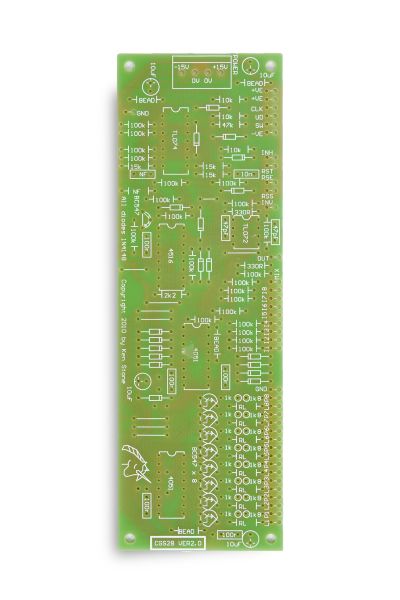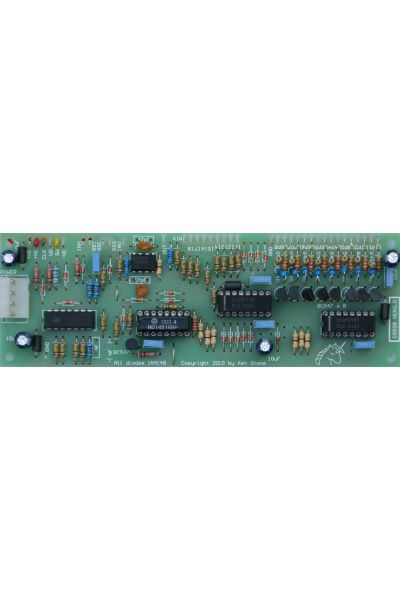CGS28 - Sequential Switch | Cat Girl Synth
- Home
- Module Type
- CGS28 - Sequential Switch | Cat Girl Synth
CGS28 - Sequential Switch | Cat Girl Synth
Special Price
$12.00
Regular Price
$15.00
This is a "core" module for sequencer type work in modular synthesis. In its simplest form, it can be used to select between different signal or CV sources.
This is a PCB only suitable for multiple formats
Availability:Out of stock
BrandCat Girl Synth (CGS)
A basic switching/sequencing module with many uses.
Some ideas on how to use this module:
This is a "core" module for sequencer type work. In its simplest form, it can be used to select between different signal or CV sources. With a simple pot-based front end and an external clocking LFO, it can be made to function as a regular sequencer. It is also possible to sequence between constant and modulated signals, for example, to enable vibrato to be placed on every fourth note. It can also count down, under external control, allowing for some interesting patterns to be produced with the addition of an extra clocking LFO. It can handle voltages in the range of +/-10v. It is a multiplexor, i.e. not bidirectional. It can route one of eight signals to its output, but not the other way around. It can also provide in dependant gate signals for each selected input.
A little on how it works:

The schematic of the Sequential Switch.
Along the left side of the circuit diagram there are the four control input processors. These convert any incoming CV or gate signal to those suitable for the internal circuitry of the module. Their sensing point is around 2V.
The up/down control is gated with the reset input to produce two different behaviors for reset. When the up/down control is set to UP, reset will set the switch to position 1. When the up/down control is set to DOWN, reset will set the switch to position 8 by preloading this value into the counter at the core of the design.
The external CV will override the setting of the up/down panel switch.
The counter itself is a 4516, and up/down counter with programmable inputs. While it is allowed to count through it's sixteen step cycle, only the three least significant bits are used, giving an output that ranges between 0 and 7. These bits are routed to the address inputs of two 4051 analog multiplexer/demultiplexers. The 4051 to the left, operating as a demultiplexer, routes +14.4 volts to each of 8 buffers in turn. These buffers drive a LED to indicate the selected channel, as well as providing a corresponding gate output.
The 4051 to the right, operating as a multiplexer, routes one of the eight input signals through to the output buffer, where both inverted and non-inverted outputs are available. There is an additional Mix In input provided to allow another signal or CV to be mixed with the selected channel of the sequential switch.
How does a device (the 4051) that has only a 15v range allow at least +/-10V to pass through it? The answer is it doesn't. By powering the 4051 and its associated drive circuitry from +14.4V and -0.6V, and placing the output of the analog switch at the virtual ground point of an inverting op-amp buffer, the full range of the signal is allowed to pass while the voltage at that point is held near or at 0V by the action of the op-amp while the analog switch is closed. When the analog switch is open, the diode connected between the input and 0V prevents in incoming signal from going below -0.6V, and thus prevents it from going outside the allowed input range. There is no need to protect against excursions in the positive direction, as these are in the allowed input range. A second diode at the output of the analog switch prevents the op-amp from driving the output below -0.6V, should the switch open while such potential exists.
| Brand | Cat Girl Synth (CGS) |
|---|---|
| Additional Resources | BOM & More Information |



